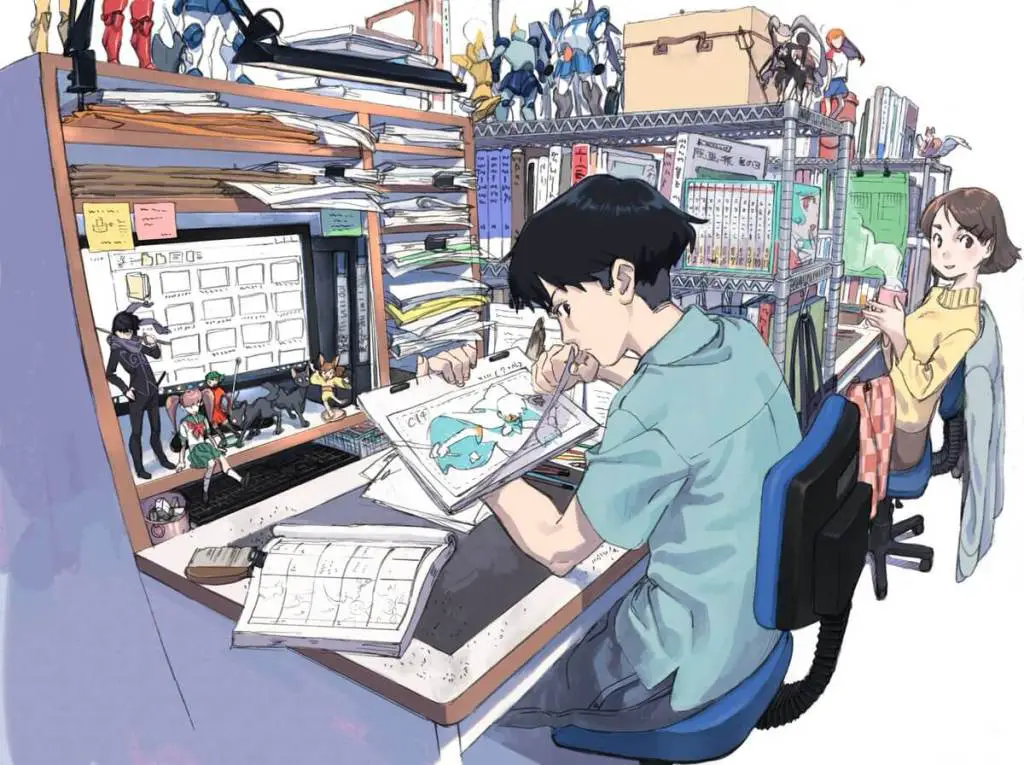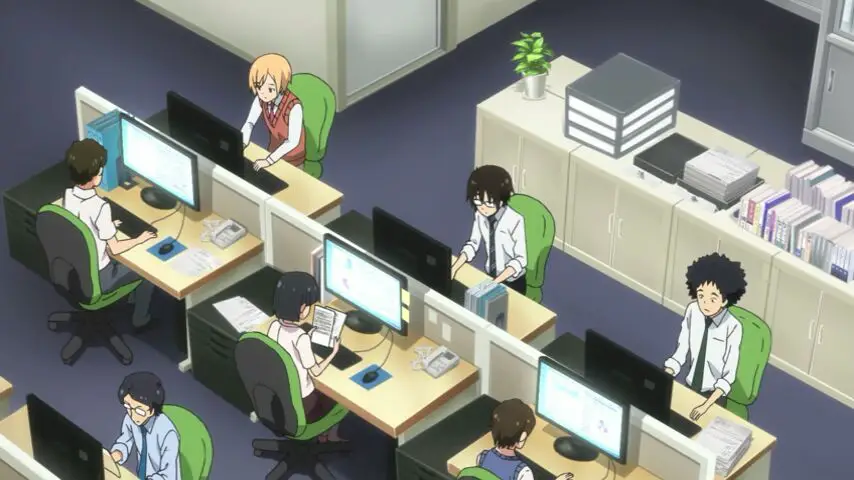Learning about the process of creating anime can be both interesting and insightful. It’s the quintessential tour of the sausage factory. You might have loved anime for any number of reasons. It might have been the cool characters, or the overall story, or the graphics. Whatever it was, you can bet that it’s because someone in the production team did a really good job. The mere fact that different people love animations for different reasons means that the teams behind them are trying hard to make these things masterpieces in all aspects. The sound, the graphics, the story, the characters, even the colors are often crafted with such attention to detail as to rival any other work of art you can imagine.
That it takes talent to make a great anime is no secret, but I’m sure you want to know the details. What is the process of creating anime like, and how long does it take? I was also interested in these details, and so I decided to do some research, then write about it.
Quanto tempo ci vuole per produrre un anime?

This is, generally speaking, a function of complexity. The more complex the design of the anime, and the level of detail, the longer it is likely to take. Rome wasn’t built in a day, and a high quality anime isn’t made in one either.
For a simple animation, without any animated characters and very few details, you can expect total production time to be less than a week. More demanding scenes that involve moving characters and intense activity, such as fights, could take weeks, months, or even years. You’re definitely not going to make Naruto tra un paio di settimane!
Come regola generale, la produzione di un anime di 60-90 secondi richiederà in media circa 6 settimane. Questo dipende dallo stile di animazione utilizzato. La complessità governa la giornata, come accennato in precedenza.
La sequenza temporale standard per un'animazione, in particolare quelle brevi e semplici, attraverserà le seguenti fasi:
- Un briefing
- Una sessione di brainstorming
- Sceneggiatura
- Creazione del concept art
- Storyboard
- La fase dell'illustrazione
- La fase di animazione
- La fase del sound design
Ciascuna di queste fasi è importante di per sé per la creazione di anime ed è fondamentale per il successo dell'intero progetto. Il punto centrale del processo è trasformare quella cosa nella tua mente (o il tuo manga preferito) in una realtà commovente e fluida.
In un periodo di 6 settimane, dovresti dedicare la prima settimana alle prime quattro fasi. Le prossime 1 o 3 settimane dovrebbero essere dedicate allo storyboard e alla creazione di illustrazioni di anime. Il resto del tempo dovrebbe essere dedicato all'animazione e al sound design. Alla fine, avrai un'animazione di alta qualità di 60-90 secondi.
The main assumption here is that you’re doing everything either by yourself or with a small team. Of course, things can be done much quicker, but that will take up more resources. You will need to hire more talent, and use production grade tools. However, given the bare minimum resources, and time and interest on your side, you should be able to complete things in 6 weeks. Below is a brief breakdown of each of the stages involved.
La fase del briefing
In questa fase creerai un brief creativo ben definito per aiutare tutti a capire qual è la visione del progetto. Dovresti includere una descrizione degli elementi stilistici che ti aspetti entro la fine. Poiché questa fase richiede molta scrittura, puoi assumere il migliori scrittori di saggi to write a clear brief for you. It’s important to do this stage right, as it opens the way for a more streamlined and cohesive project.
La fase di brainstorming e scrittura della sceneggiatura
Once you’re done with the brief, you need to brainstorm on how to bring the brief to life. This process will involve the writers, who have to work together with the directors to figure out the tone and style of the anime.
Once brainstorming is done, it’s time to write the script. Again, this stage will heavily involve the writers, so get good ones. I migliori scrittori di saggi nel Regno Unito è una buona opzione qui. Hanno molta esperienza nella scrittura di film e animazioni. La sceneggiatura è l'anima stessa dell'animazione, poiché determina le emozioni che l'animazione susciterà nel pubblico di destinazione. Con la sceneggiatura giusta, puoi ottenere la reazione prevista dal pubblico.
Voce fuori campo
Once the script is ready, it’s time to pass it on to the voice artists to do their magic. The sooner you record them the better, as it will give you an opportunity to plan the rhythm and length of the visual aspects of the animation based on that.
Preparazione del concept art
Once you’re set on the message of the animation you can begin to visualize it with the concept art. This will necessarily be a rough visualization, as you’re still trying to feel out what the final product will look like. The illustrators will collaborate with the art directors to create a cohesive artistic scheme for the anime.
La fase dello storyboard
In questa fase, costruirai lo storyboard in dettaglio, usando la tua sceneggiatura e il concept art per costruire il video, scena per scena. Sarà un'ottima opportunità per decidere la struttura dell'animazione e come utilizzare le scene per far avanzare la storia.
La fase dell'illustrazione
In questa fase, disegnerai illustrazioni dettagliate, specificando aspetti del design del personaggio e caratteristiche delle diverse scene.
La fase di animazione
In questa fase, utilizzerai le tue illustrazioni e gli storyboard per creare le scene animate. Il software di animazione sarà ampiamente impiegato qui per dare vita alle cose e ci saranno molte revisioni, scena per scena, per assicurarsi che tutto sia liscio.
Design del suono
In this stage, you will add sound effects and voice overs to your animation. Adding audio to the animation is a design challenge in itself, as everything needs to mesh smoothly together, so this might take a while. It’s about more than just the voice overs and sound effects. You will also want to add the right music to set the mood. It’s highly technical, but it’s also loads of fun!
Conclusione

As you can see, creating anime isn’t a walk in the park. It is, however, a fun hike through the mountains. While it does take time, involve different areas of expertise, and pose its own set of creative and technical challenges, anime creation is a deeply satisfying and rewarding experience that you will love. At the very least, even if you don’t undertake such a project yourself, you will definitely appreciate the work that went into your favorite anime the next time your binge-watch it.
Biografia dell'autore:
Alice Jones è una giornalista e scrittrice che offre servizi professionali di scrittura di saggi. She is from San Francisco, CA. She graduated from the University of San Francisco and got a Master’s Degree. Alice concentrated on such topics as marketing, business, and freelance.
Grazie mille per averci informato sulla creazione di anime! Grazie e rispetto a tutte le persone coinvolte nella realizzazione del nostro fantastico anime!!!
“Cerchi uno scrittore accademico professionista? Academic Era è il posto giusto per chiamare e ottenere scrittori accademici online! Chiamare ora!"
Siamo esperti di scrittura CIPD professionisti che offrono servizi di assegnazione online nel Regno Unito, negli Stati Uniti e negli Emirati Arabi Uniti per tutti i livelli a tariffe convenienti.
Più complesso è il design dell'anime e il livello di dettaglio, più tempo ci vorrà.
[…] Consigliato >> Tutto sul processo di creazione di anime: quanto tempo ci vuole […]